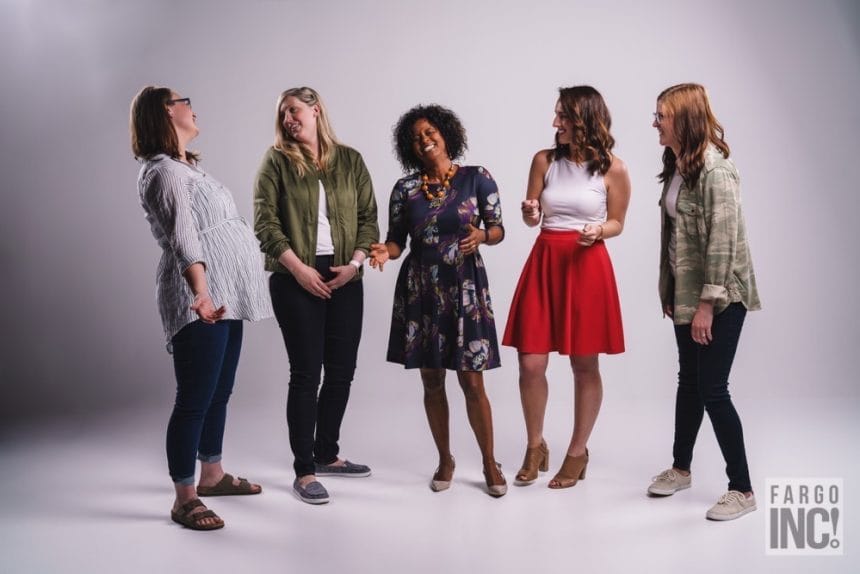Photos special to Fargo INC! staff
It’s the question no one can seem to answer definitively: Why aren’t more girls going into high-tech fields?
Despite making up more than half the professional workforce and more than half of students on college campuses, women still haven’t penetrated the industries of tomorrow in equal numbers.

We assembled a roundtable of five FM-area women working in tech to try and figure out why.
It’s the question no one can seem to answer definitively: Why aren’t more girls going high-tech fields?
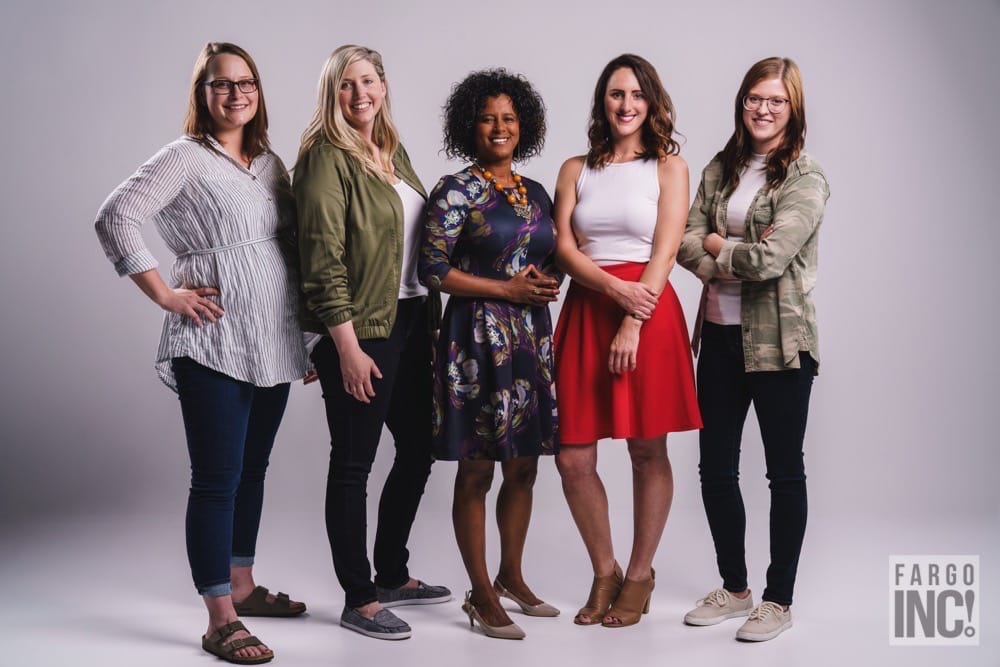
PROMPT 1
Nearly 60 percent of professionals in the U.S. are women, yet only 25 percent of computing occupations and 20 percent of Fortune 100 CIO jobs are held by them. How do you explain this gap?
Shannon Wiedman: One of the theories that I think is really interesting is that in 1984, a lot of personal computers were entering people’s homes. A lot of the advertising was really focused around males, and tech was a “dude thing.” It was sold that way. Because before 1984, there were a lot more women involved in computer science. And in ’84, the numbers started to drop, and they’re still dropping.

I’ve done a lot of research myself looking back on ads during that time, and it’s so interesting to see. If women were in the ads, they were using their bodies to sell the tech. There would be women literally on computers selling it, and it’s like, come on!
Megan Otto: Also, the movies of that era like Weird Science and all those little teenage boys building computers…

Betty Gronneberg: I read somewhere about how the mid-’80s were not only the introduction of personal computers into the home but how that amounted to playing a lot of video games, too. And it would be boys playing them.
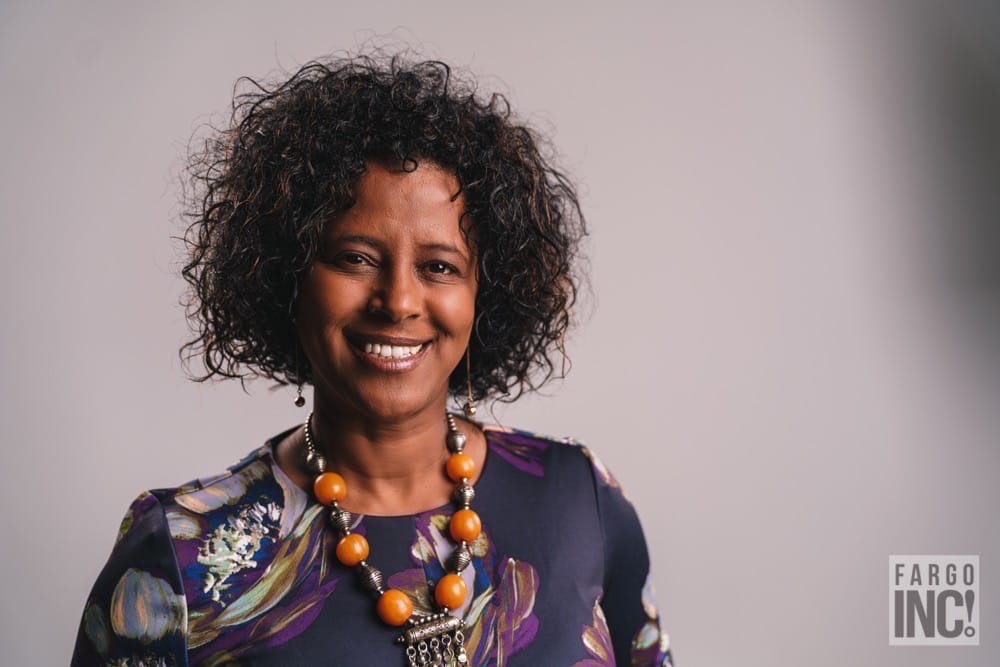
Madison Christensen: I think a lot of it does go back to the advertising around that time period. And it’s gotten a lot better now, but I think girls—like the media they would see—were focused on perfection or being pretty, and guys were raised to take risks. Growing up, that makes you less likely to take risks, makes you scared of failure and makes you not want to ask questions because you don’t want to be wrong.

Gronneberg: Research shows that girls get excited early on in elementary school but that they lose interest in middle school, where friends are important and the perception is that computer science is a boy’s club. And then they feel like they can’t do it, which is sad because women are rockstars!
Kara Jeffers: I took programming classes in high school, and, since it was a small school, it was either me by myself in the class with the teacher or it was me and one or two other girls. And I was really interested in it, but then that interest kind of dwindled. And I don’t really know why.
Kailee Gray: I think it’s hard when you’re surrounded by people who don’t look like you when you’re doing something really difficult. You already feel like a fish out of water, and it’s challenging. It becomes a little overwhelming.

Otto: And when so few females are in a field, younger girls don’t see them. And so they don’t associate themselves with that career, or they don’t even think it’s a possibility. It doesn’t even come to their mind. I know it didn’t come to my mind at all.
I remember thinking my options were “normal”—like teaching, nursing, all these things that “normal” women do. And that’s what I thought was normal. And it’s weird because all these (tech) careers are out there, but you just don’t know about them until someone tells you about them or you see people doing them.
Gronneberg: Yes, it’s about those inspiring role models who girls can see themselves in. And it’s getting better. TV shows now have girls coding and girls doing things in science, and that has a huge, positive cultural impact—access to information, to opportunity, to exposure. Girls have said to me, “I wish I knew about this early on. It would have helped me with expensive mistakes and changing majors in college.”
Christensen: Which I think is great. Now, there are so many learning tools that are free, but when you think about 10 years ago, that would be a stressful decision: “I don’t know if I’ll like this. But I want to try it. But I don’t want to waste my time.” For me, it was a hard decision whether to do something technical or go into marketing, and I was like, “I’ll just teach myself.” But if I had something like that in middle school, I probably would’ve gone the full-blown tech route.
Otto: And it’s so hard to even know what computer science is before you’re into it. You can work at a creative agency, and it’s a lot of fun things if that’s what you like. That’s computer science. Being in tech is not all being hidden in a basement and drinking Mountain Dew and eating pizza. You can have fun, spend time outdoors, enjoy people.
Christensen: A lot of people think computer science is black and white. They think it’s just sitting there writing code all day, but there’s so much more to it.
Gronneberg: We’re entering the fourth industrial revolution, where technology is not just a tool but a way of life. It’s artificial intelligence, self-driving cars, genetic modification. Everything we do and the way we do it, as well as and the way we think and behave, will be dictated by technological advances.
Knowing computer science or learning how to code will be as foundational as biology. You don’t necessarily have to be a biologist, but you should know how your body works. And, of course, if you’re interested, you can go further into it. I know that’s what we try to do (at uCodeGirl) is expose girls to it so that they can see what it is and unpack it a little bit.
PROMPT 2
As of 2015, nearly 60 percent of all bachelor’s degree recipients were women, but less than 20 percent of those degrees were in computer and information sciences. It seems it’s not necessarily a lack of opportunity, then, but rather different choices being made by college-aged women.
Wiedman: I think Kailee mentioned before about not being around people who look like you and how tough it can be not seeing any of your gender in a specific place. Camaraderie can form that you feel like you’re not a part of. Or you don’t have the confidence to jump in. Or you just sort of feel like the odd one out.
Gronneberg: Confidence is a learned behavior, and statistics show that, from elementary to middle school, confidence drops sharply for young girls as they mature into their teenage years.
Going into a room full of boys and doing Science Olympiad or Lego robotics takes a lot of courage just for you to say, “ll do it. I’ll dare to be different.” And being the only one is awesome, but it’s really tough.
When I was studying computer science in college, there were two female students, and the rest were boys. And it was hard. We were excited but intimidated. With the boys, you just don’t see that hesitation. They just go do it. It’s about getting out of your shell and asking questions and working together. And women, we hold back most of the time.
Otto: There’s this phenomenon where, when men and women see a job description, men will look at the list of necessary skills, and if they have 40-50 percent of them, they’ll apply for the job. And go in there with confidence.
Where women have to have 100 percent of them, if not more—like “Oh, I can easily do this job”—to even apply. But you just have to go into it knowing that you can learn on the job. I think being open to learning can get you a lot more opportunities than thinking you know everything. Women just tend to be over-prepared for things.
Also, you’re already sticking out like a sore thumb, and then when you do say something, it’s judged more. Or at least you feel like it’s judged more.
Christensen: You’re less likely to ask questions because you don’t want to be wrong.
Jeffers: Or you say it once, and it failed that one time so you’re never going to say it again.
Otto: I do think it helps to have a buddy system. It’s definitely helped Shannon and me. Working at the same place, we have that support system—having someone who’s like, “Just go for it,” and encouraging each other.
I think it helps to have that network of women in tech. There are so few of us here, but just connecting so you can support each other and encourage each other along the way helps a ton. Because if you’re in this alone, it’s so much harder.
Christensen: And, honestly, the best ideas come out through collaboration where you’re just spinning random ideas anyway.
Samantha Stark: When I was growing up, my mother was an engineer, and she was one of very few. She’d come home and always talk to me about how, since she was a minority, she had to speak louder than men. The problem, though, is that when a woman does show dominance or any type of courage, sometimes that can become discouraging to men, and they can become intimidated by you.
I always think of that because even though we’re told that we have to work twice as hard to get where we want to be compared to men, we can be pushed down whenever we are showing that courage or that confidence.
Otto: “She’s bossy.”
Christensen: “She thinks she knows it all.”
Stark: You start to feel like, “Well, I’m not being heard, and why, when I’m trying to be heard, am I being cut down again?”
Wiedman: My mom’s in a male-dominated industry, too—internet and phone-systems cabling. Maybe there’s a reason we’re all here right now. We had those people in our families, and that makes a difference.
Having that person at home who will encourage you to do those things. My dad was a geek. We always had a computer.

Christensen: My dad was a tech guy, too. And my brother.
Wiedman: Yeah, if you have those things at home to play with and you’re not discouraged from doing it, that’s what got me interested. Just having it there was a good first step.
Gronneberg: For me, I’m an immigrant so I’m already different. I speak differently, and I went into tech, this male-dominated area.
Typically, one of two things happens. Either you leave because you hate it, or you try to adjust. So that’s what I did. I adjusted I tried to code and play games with the guys.
As we’ve mentioned, guys bond much more, and they go out for beer and things like that. And I don’t do that. So you get left out. It’s about more than just the actual work, too. It’s having that camaraderie. You can only talk code so much.
Otto: I think a lot of companies rely on the normal activities of employee bonding. Like going out for beers or going to a game or something. And those tend to be things males do.
And for women—and men, too—who have kids at home, it’s hard to go out after work for drinks when you have to go pick up your child and you have those responsibilities. You can miss out on all those valuable bonding experiences.
Jeffers: Do you, as women, feel the pressure then to ever change your personality to be more masculine?
Gray: I’m working on becoming more confident with my coding and talking to my male coworkers about code. And I think I need to change in that direction, but it’s a good thing.
Christensen: I think it’s not only conforming to what they’re like, though. It’s getting more confident in the skill set you have.
Otto: And getting them used to being around someone else, someone new. Like yes, I’m different than you, but that’s okay. You have to get used to this.
PROMPT 3
Instead of viewing one’s minority status in an organization as a negative, should more women view it as an asset?
Wiedman: We bring something else to the table, and I think that’s important. It’s about staying true to who you are and not changing, but you do have to be adaptable, too. It has to work both ways.
Ultimately, it just depends on what situation you’re in, but I think, in general, it’s good to just be welcoming to people who are different than you, whether it’s someone new to the coding or tech industry or whatever it is.
Gronneberg: Yes, it is an asset. A varied perspective is a good thing—whether in development, the design process or the boardroom.
Otto: I remember a story I was reading about a car company that was testing airbags, and they only had men on the engineering team. The airbags worked fine, and then they put it out to production, and women died because the airbags were built to the standard male body size.
Wiedman: It’s so important in tech, specifically, because there are so many applications and so many things that are being built. To have that diversity on a team is so important.
Do you all remember the little paper clip in Microsoft Word that would pop up and say, “You need to do this!”? Clippy was his name. When they were developing that, I don’t believe they had any females on the team, and after it launched, people were like, “Why do I have this thing looking down on me all the time?” It seemed really intimidating. And then they brought in a female perspective, and it was just a different way of how they were seeing it as opposed to how males were seeing it.
Diversity forms the most rounded opinion on things.
Jeffers: So how do you encourage companies that might want this diversity but don’t think that not having enough women in tech is an issue?
Gronneberg: I think a lot more companies—whether it’s Google, Microsoft or others— are realizing the importance of the diversity of ideas.
Even at an early age—all the way down to middle school—the NFL starts recruiting players. Tech companies have to think the same way and cultivate those opportunities.
Right now, there are more than 500,000 open computing jobs, and last year, only 40,000 people graduated in computer science. There’s going to be exponential growth in all areas of tech, and we simply don’t have the resources—boys or girls. Plus, girls are increasingly left behind by not having that exposure early on.
Otto: I think the hardest part is that companies are trying to get women, but they just aren’t there. Then, when they are and a woman is hired, sometimes they’re presented with that masculine culture and are kind of chased out. And that can be the hardest part. Like they went through all the efforts of getting there, and then they get there and are treated unfairly.
I also think a lot of companies just aren’t ready for (women) quite yet. They need to have these policies in place of inclusion and steps where, if X doesn’t happen, here’s what’s going to happen. And they actually have to follow through with what their ideals are.
A lot of that is policy changes or culture changes we’ve talked about already: inclusion and bonding of employees and making sure guys in the company know that women can code, too. Everyone has to have that same mindset. If you hire someone who thinks that women can’t do something, it’s just going to infect the company and create a bad environment.
Christensen: I think that when somebody new comes in, you need to take a step back and remind everyone, “We’re all here for a common goal of completing something.” And when you set aside everyone’s differences, you can work together and people really mesh.
It doesn’t matter who’s doing what better. If somebody only sort of knows how to do something but they’re still helping, it can be huge for the project.

Gray: It’s better for the company’s bottom line when there are more women involved, too. If nothing else, we should be making companies aware of that so that at least their bottom line is going to be stronger if they hire us.
Jeffers: A lot of the articles I was reading to prepare for this discussion said women, as the whole, are more creative, more productive, and make better products. Well then why aren’t companies hiring them?
PROMPT 4
“Unconscious bias” is a term that gets thrown around a lot with regard to this topic. What role do you think it plays?
Otto: The micro tendencies are definitely real. You tend to notice them more when you’re working.
I’ve noticed before that, in a meeting with a male coworker, we’ll be talking about a project, and it’s fine. But then I’ll overhear him in another meeting where it’s him and another male. And its like, “Yeah, dude, let’s do it like this.” It’s just more open and more free. They just collaborate and get things done on a more free, almost better, level because they’re so open with each other.
Jeffers: That really is a hard thing because you do have to know you’re doing it.
And it’s not that you’re being an awful person. If you recognize it and want to change, you can move forward. But people tend to be so proud that it quickly turns into, “No, I’m not doing anything wrong. I would never treat someone like that.” And it’s like, well you may think you wouldn’t and you may not want to, but it’s still that …
Otto: … unconscious bias. And that goes for all genders. At Girl Develop It, we have a summit every year where all the chapter leaders get together. Our whole theme of this past one was unconscious bias and how to get over it. They brought in a professional who taught us about it, and it’s crazy.
It’s like, who do you want to hire? The person who you can get along with in the office and be friends with or the person who will get the job done best? Most people are like, “Obviously the person who can get the job done best,” but in the interview process, who are you more likely to end up hiring?
Wiedman: The reminds me of the résumé test. They sent out the same résumé to different job openings, and the only difference on it was the name—male or female.
In the test, males were more likely to get called in for an interview than the females, even though the name was the only difference on the résumé.
That’s crazy. That’s unconscious bias, and it’s something we all do. That’s one thing where it’s like: Just be aware this is a thing. I think that’s step one.\
PROMPT 5
How can men be better allies?
Wiedman: We need men as allies to help with this because otherwise we’re not going to get anywhere. I know I have allies at work because I talk about this stuff a lot. But they have me to talk to about it, and I’ve opened their eyes to stuff.
Sometimes, they’ll say something, and I’ll be like, “You can’t say that!” And I’m friends with them so I’m comfortable doing that, where some people maybe wouldn’t be. But I can tell they’re on our side. If they hear something, they’re correcting it. They’re the ones who are helping us.
Otto: It can’t be an “us vs. them” thing, though. It has to be everyone working toward one goal. And I think everyone wants to get there, but they don’t know what they’re doing, and they don’t know how it’s affecting women, in particular, in this field. It’s just about having an open, honest conversation and being open to new ideas.
Stark: In tech, there’s obviously a large percentage of men who are managers and bosses. So when you’re a woman, you need your male coworker to be there to ask them, “Do you see what I’m seeing? They wouldn’t treat you this way. If you were in this situation, they wouldn’t have done that.”
And it’s not always a huge thing. It can just be minor differences. But it’s helpful to be able to ask someone else, “Was I out of line? Would they have treated you that way? Am I throwing up the feminist flag too early?” Because a lot of times, I don’t think so.
Christensen: I have an example.
A while ago, I had something wrong with my car’s vent actuator so I did a bunch of research and printed out where to get the part I needed because I wasn’t going to pay $1,000 to get it fixed.
So I go to the store, and this guy comes up and asks, “Um, can I help you? You look lost.” And I said, “No, actually, I’m good. I know what I’m looking for.” And he was taken aback by that.
I was like, “I know what I’m doing here. I’m looking for this part.” And he goes, “Oh wow, you actually did your research. I’m really impressed. I’ve never seen a girl do this. My wife wouldn’t even know where to start with that.”
I very much expected it, and I could tell all the guys at the front counter were like, “Why is she walking to that aisle right now? Does she know what she’s doing?” I got my stuff and left and just thought to myself, “That should not happen.” He should’ve just said, “Oh, awesome, I’ll help you find this part.”
Gronneberg: Yes, those first impressions are really important, and I don’t really know how to change it, but I get that a lot, too. When I go into a room and introduce myself and say I’m a software engineer, people will ask, “Are you really?”
Otto: My mom is a civil engineer, and she always goes to these civil engineering conferences. They’ll be sitting at a table, and people will walk up to my dad and say, “Hi, which company are you with?” And he’ll be like, “Uh, my wife.” Everyone just assumes so much.
Gronneberg: A couple years ago, there was a Twitter hashtag that became very popular, #ILookLikeAnEngineer. And it was partly because, in New York City, this software company who was trying to recruit more female engineers hired this great-looking engineer to be the model for the ad, and everyone was like, “No way, they hired a model. She’s so beautiful. She can’t be an engineer.”
Wiedman: Right, because we’re all ugly!
Gronneberg: It goes back to that slow-moving perception of computer science and coding, that you have to have your hair a certain way and basically look like a man to be considered intelligent and prove that you can do this stuff.
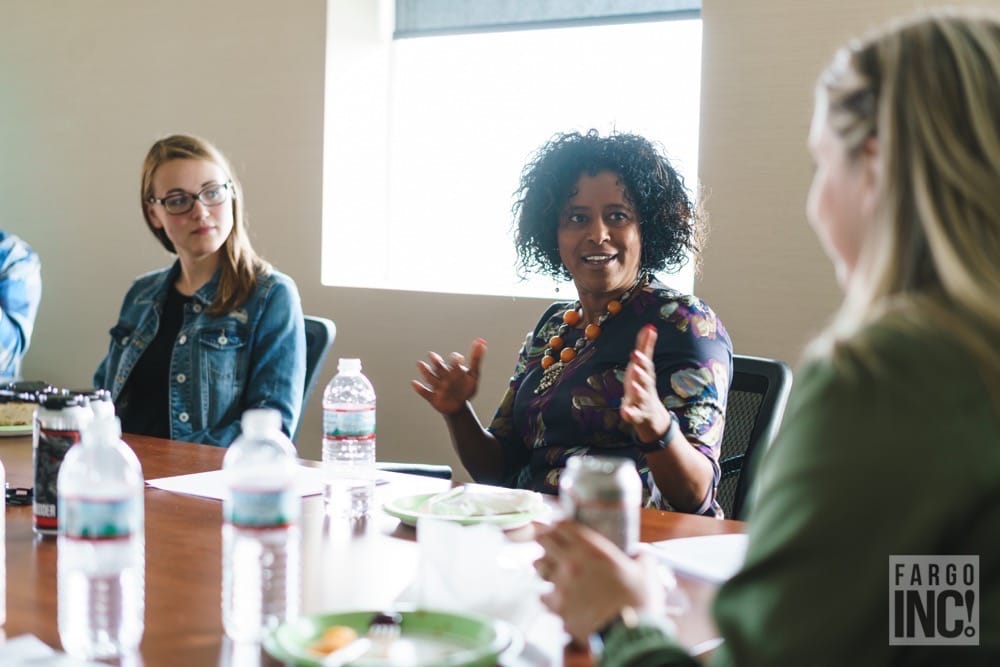
Otto: It’s interesting. Your coworkers know what you’re talking about. It’s the people who haven’t heard any of this before who are still doing it.
Stark: I think we just want men to take a step back and understand that just because it’s not happening to you and you don’t see it every single day and aren’t encountering it doesn’t mean that you might not be overlooking it.
Wiedman: We don’t hate men.
Stark: Yeah, exactly. Being a feminist doesn’t mean you hate men. It doesn’t mean that you’re against them. It doesn’t mean that every single man is against women. It’s a collaborative movement of accepting that we all just want to be treated the same.
Gray: I’m new to my company, I’m new to programming, and I work with all men in the programming department. And I get so much help, they include me, they invite me to lunch and they’re awesome. But then I take a step back and panic and am like, “Oh no, is this because I’m a woman?”
They’re treating me really well. If I were a man, would they be? Is this okay? I don’t know.
Wiedman: But even if they are, they’re taking the extra step to include you.
PROMPT 6
Do you think gender norms play a role in steering women down certain paths, even from an early age?
Stark: When I was younger, even though my mom was a female engineer, I still got the typical “girl” toys. And whenever I wanted to play with Legos, it was always my brothers’. As you all probably know, there’s this movement right now to make “girl” toys more like the kinds of toys boys play with—Legos, building things, etc.
I’m curious what all of your upbringings were like. Did your parents give you STEM (science, technology, engineering, math) toys or Legos? Do you think something like this could help?
Gray: For me, I started studying math before I went into programming. So I’ve always been super into math, and when I was growing up, I spent a lot of time with my grandparents. I had dolls, but I mostly just wanted to play cards with my grandma and grandpa. And I think that helped me, just playing cards and doing different kinds of things.
Wiedman: I was blessed that I had a brother because I could play with all of his toys. My favorite childhood toy was one of his toys, and it was a circuit board. There were these wires, and you’d connect them and would make the board do things—like turn a light on or make a noise or whatever. I loved that toy a lot, and when I think about coding, I always come back to that.
Because it was about connecting things to make them work, and it was cool. I do think the toy thing is huge for kids. One of the original cofounders of the national Girl Develop It created a toy, a programmable bracelet called Jewelbots. And you get them with your friends—Megan and I have them—but they’re really aimed at kids.
I think we need more of that stuff. And it doesn’t have to be all about coding a bracelet to do something. It can be anything. It can be just making the toys we played with as kids a more neutral space so girls don’t feel intimidated. Because people, when they’re buying toys for kids, they’re going where they think they should go to buy them.
Gronneberg: I also think society sends mixed messages to girls. When they’re born, we color code them blue and pink, and then encourage them to play with pink toys. It’s all decided for you.
Playing with “boy” toys doesn’t need to take away from our female instinct of being nurturing either. The reason we play with a doll is because we want to nurture it. But what Legos, for example, do is give you the time and concentration to keep doing and failing and combining things in a different way.
It’s creating that same thing for girls, and it’s awesome because it gives them a sequenced kind of work that they don’t normally do because they think it’s for “boy toys”.
Otto: I think it’s about the parents a lot, too, to encourage them to do it. I got a GoldieBlox toy for a relative, and unfortunately, the father was like, “Oh, you won’t like that. It’s too much work.”
Luckily, the mother helped her put it together, but it was just so disheartening to hear, “Oh, you wont like that. Go play with a doll or a simple toy.” Its like, no, she will like this, and I’ll do it with her if it takes that.
Jeffers: Even though my mom and dad were both engineers, a lot of the encouragement for me to play with things like that came from my dad—not that my mom discouraged it at all.
I’m just realizing, though, how blessed I was to have parents who encouraged me and how different it would be if I hadn’t. And I’m sure that’s where a lot of these girls are coming from is a situation of less support.
PROMPT 7
How important are visible and accessible role models to young girls in tech?
Otto: Having programs like Girl Develop It and uCodeGirl working together—uCodeGirl getting younger girls involved and Girl Develop It teaching adult women—is tremendous, and it’s happening in many other cities as well.
Gronneberg: It’s so important that we have accessible women we can approach.
When we started uCodeGirl, it was important to not just have a summer camp or after-school program. We also wanted to support them by creating a year-long STEM mentorship program and find area women in STEM—female tech leaders, women professors in math and science, etc. And we already have close to 30 women who have said “yes.”
Combining the young girls with these women who can not only give them skills but also share how they got to where they are and their experiences really helps build that community for the girls. And then, when the girls graduate, they can be mentors and the next generation can see themselves in that ecosystem.
Gray: Yeah, it’s great to not only give them that mentorship while they are kids but then also have a community to support them when they actually get out there and on the job is really important.
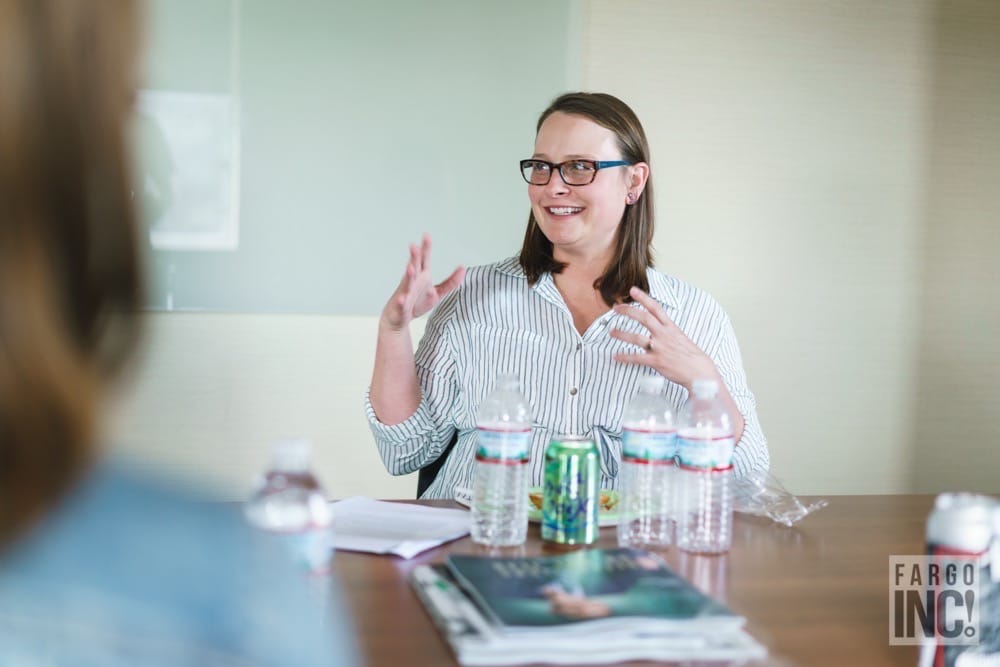
Christensen: I was surrounded by awesome people who pushed me, and I think that everyone needs that. Not everyone gets that.
I was fortunate to have a brother who reminded me, “You don’t need to do what your friends are doing. Do what you want to do. Go and learn this. You can do it.”
Gronneberg: Especially when you don’t yet believe in yourself, it just takes someone to say, “I see you have the talent. You are good.”
Gray: And you really only need that one person. It’s just like if someone believes in you, it makes a difference.
Otto: And that’s not just valuable at a young age, either. You need that as an adult, too.
Wiedman: I was just going to say that I don’t know where I would be or if I would have started a Girl Develop It chapter if it hadn’t been for Megan. I probably wouldn’t have done it if I hadn’t had someone else pushing me to. I didn’t even know how to code at that point. I didn’t know anything. I was just like, “I want to do this!”
PROMPT 8
One encouraging stat is that the percentage of women earning computer-science degrees is up nearly 20 percent since the late ’80s. Is it enough to see incremental improvements?
Otto: Of course. It’s encouraging to see anything.
Gronneberg: I think the world is realizing we don’t have enough resources in hard science, and whether we like it or not, technology is not waiting for us.
Otto: I think we should always shoot for 50-50, but it can be hard to tell what the real numbers are when you’re so in the depths of it. And we aren’t at a global level. We’re just affecting Fargo. So what we look at is individual people.
It’s just so fun to see a girl come back for her second event and be so excited and want to continue learning. That’s the exciting thing for us. That makes us feel like we’re making a difference.
Christensen: Rather than just reaching for a number, I think it’s about people going into what they truly want to do and not holding back from challenges and really embracing what they’re passionate about.
Gronneberg: We had a young girl who took the class last summer, and now she’s bringing her sister who’s actually older than her. And we’re so happy.
They hear about uCodeGirl in the community, and they say, “I’m going to do this. I’m going to build an app. I’m going to learn to code.” And that’s the underlying confidence and empowerment framework we’re shooting for.
PROMPT 9
Can a culture shift happen when there are still fewer women in tech?
Otto: With this issue becoming more prominent, I think it is happening. It feels like everyone is talking about it so it’s bound to happen. It’s just a process. It’ll take time.

Gray: Yeah, it would probably be easier if there were more women, and maybe things would progress faster, but it seems like the community is interested in a change.
Jeffers: Do you think Fargo is ahead of its time in that way?
Gray: I think yes and no. If you consider the numbers in my workplace, it’s hard when the numbers are just not there. It seems like Fargo has much lower numbers, as far as women go, but we do have these other great opportunities in the community, and that’s huge.
Stark: I feel like just having you all here—women who are actively trying to increase the number of women in tech and STEM fields in the FM area—shows that growth.
There are so many young women who have already chosen a field and say, “I didn’t know there was an opportunity to be in tech.” You can see the cultural change. We have to continue to push, though, and not give up. Just because you’re starting to see a change doesn’t mean you can take a step back.
The few women who are in it want more. Women in their fields. So even though there is a small number, they’re saying, “We want more women. What can we do to show friends and younger women that they’re welcome here?”
Gray: We just need to make more people aware that we’re here.
Otto: Another thing that can be hard is when people say they just want to get the best people for the job, and what if women aren’t the best? But they could be. You just need to train them. You hire the person, not the job.
PROMPT 10
What advice would you all give to parents or teachers of kids who have an interest in tech?
Christensen: I think you can’t know until you try, and why not try to learn the basics of a bunch of stuff, see what you really like and then try to excel in that?
Gray: Have as many role models being visible as possible. Betty mentioned several names—Ada Lovelace, Grace Hopper—and I think we’re not aware enough of those women who made really incredible contributions. When we think about people in tech, generally, we think about men like Steve Jobs. But if we can expose these girls and even ourselves to women who have done big things, it’s really helpful.
Christensen: Like the movie about the women at NASA, Hidden Figures. Why didn’t people know their names?
Gronneberg: It’s about knowing the shoulders we stand on so it’s not unfamiliar territory. Women and girls have been there before.
Also, we need to be building that community and cohort of girls so they can understand that, yes, friends are important, but they can also be interested in cool things together—doing something like designing a t-shirt that lights up. We need to make technology fun as an entry point. Because adding more women means more solutions.
Otto: My best advice would be for parents and teachers to try it, too. Just having some understanding of what you’re trying to tell your kids to learn. Why should they listen to you if you don’t know anything about it either? Be that role model for them.
Kids already look to their parents as their No. 1 role models so if they’re trying something new and seeing you do it, I think that would encourage them to do it a lot more.
uCodeGirl
Girl Develop It Fargo
GirlDevelopIt.com/Chapters/Fargo
